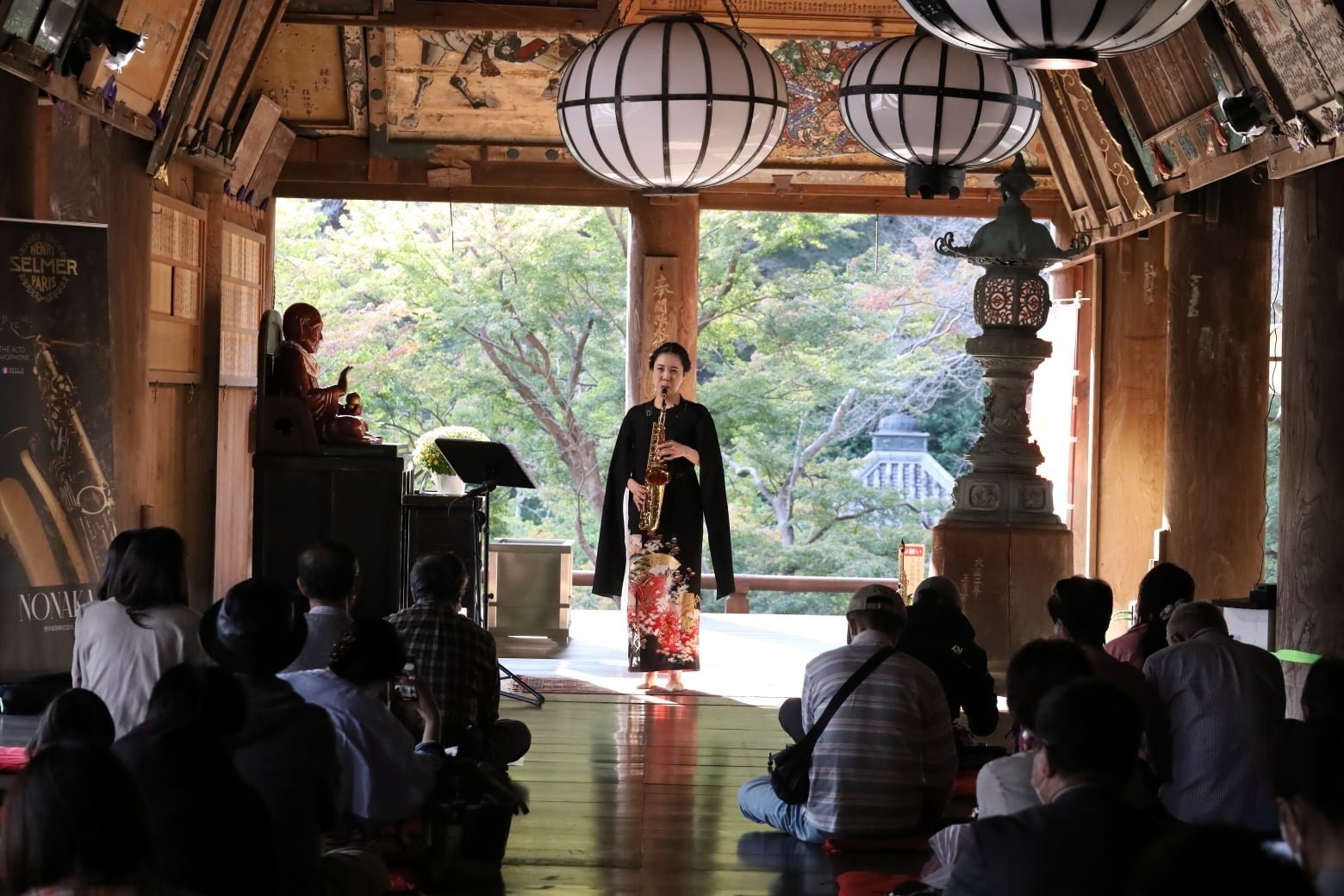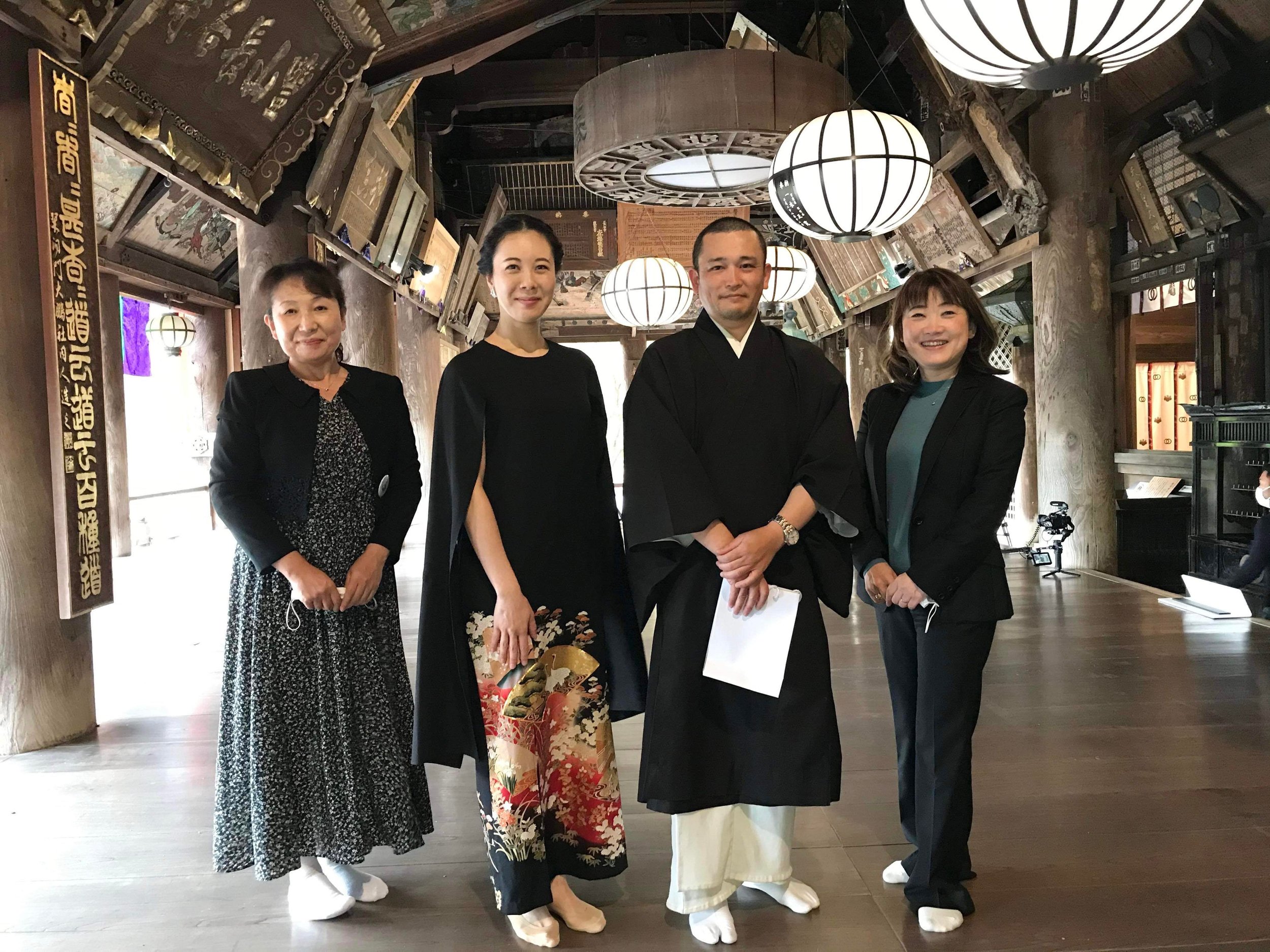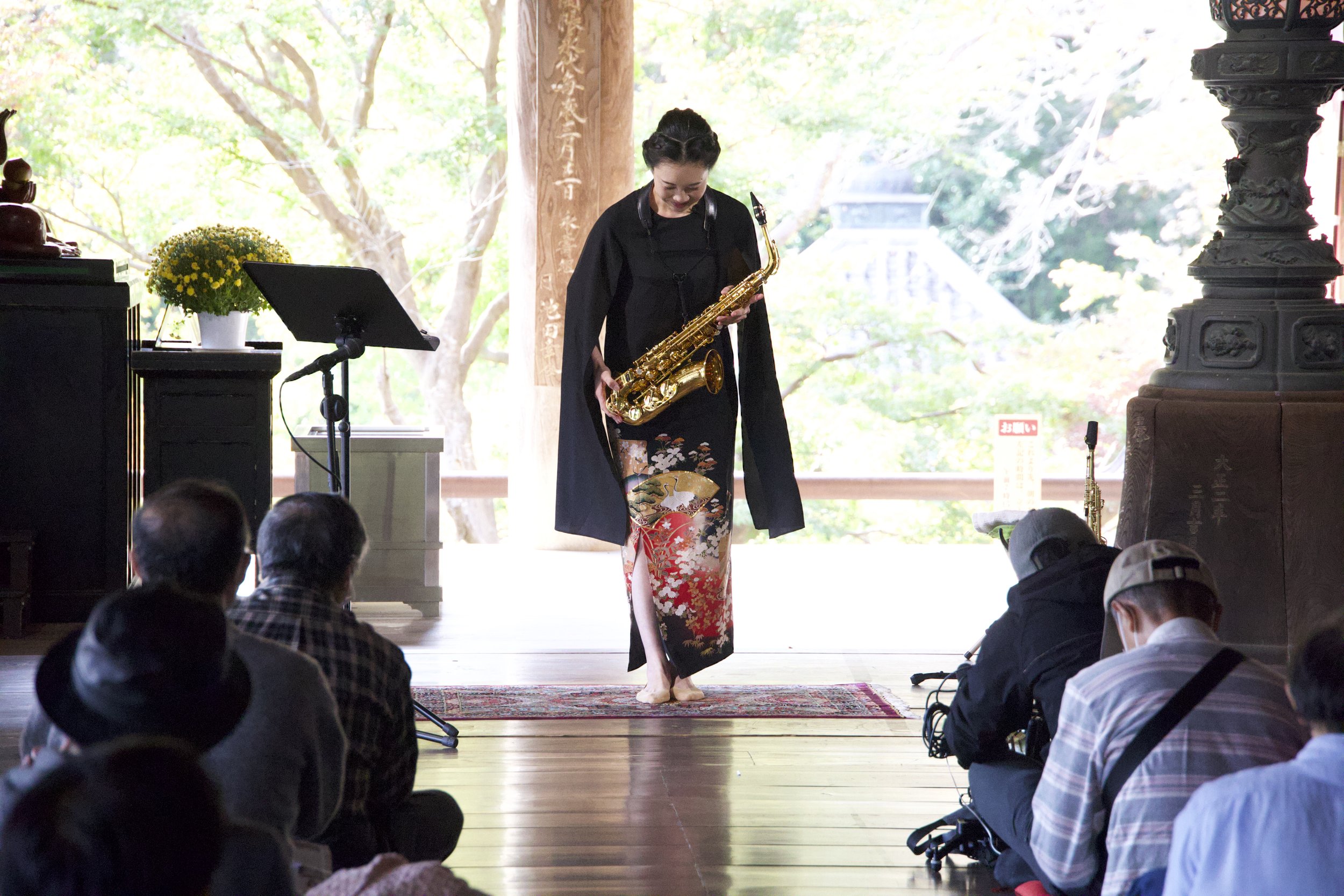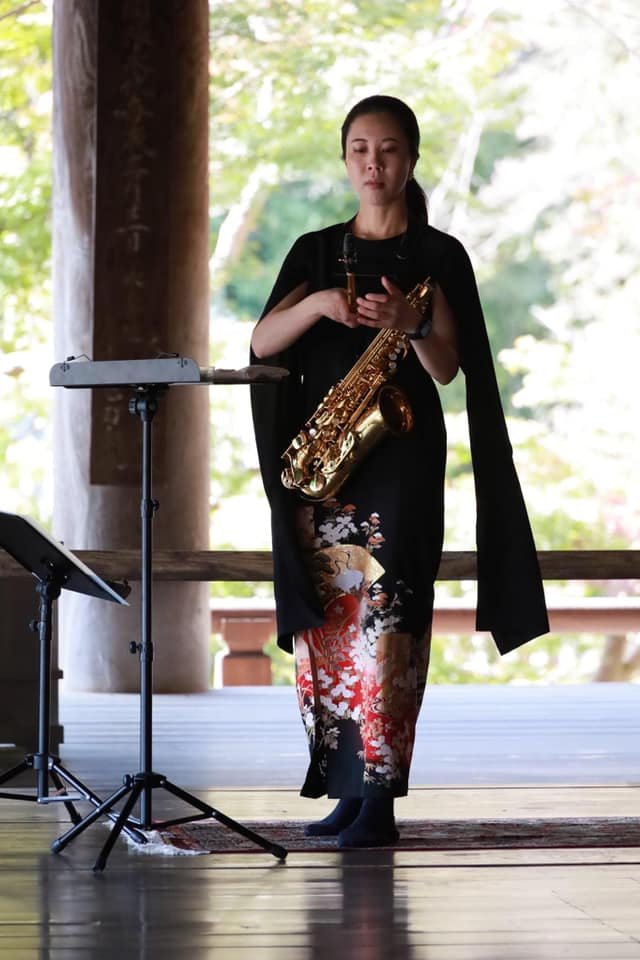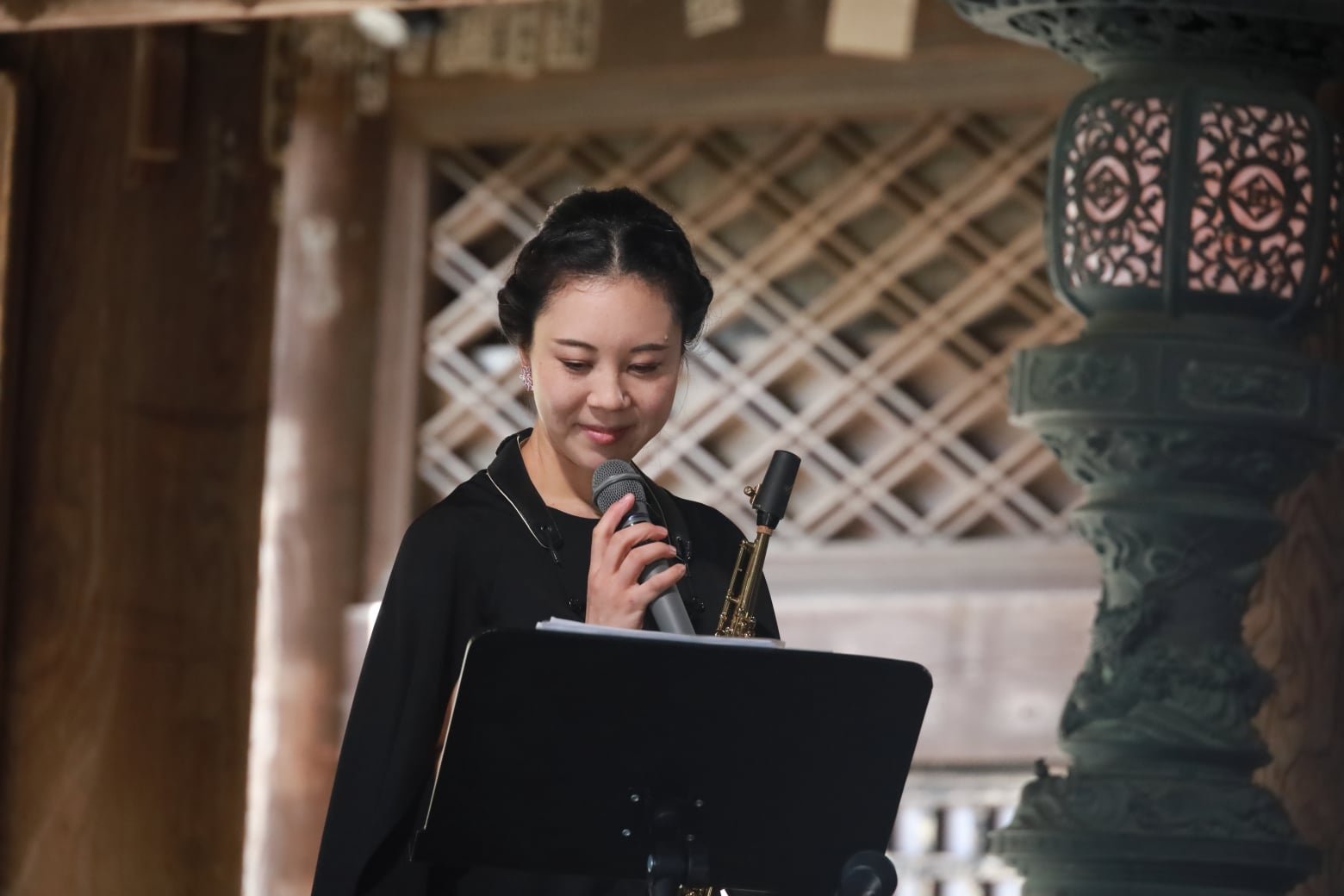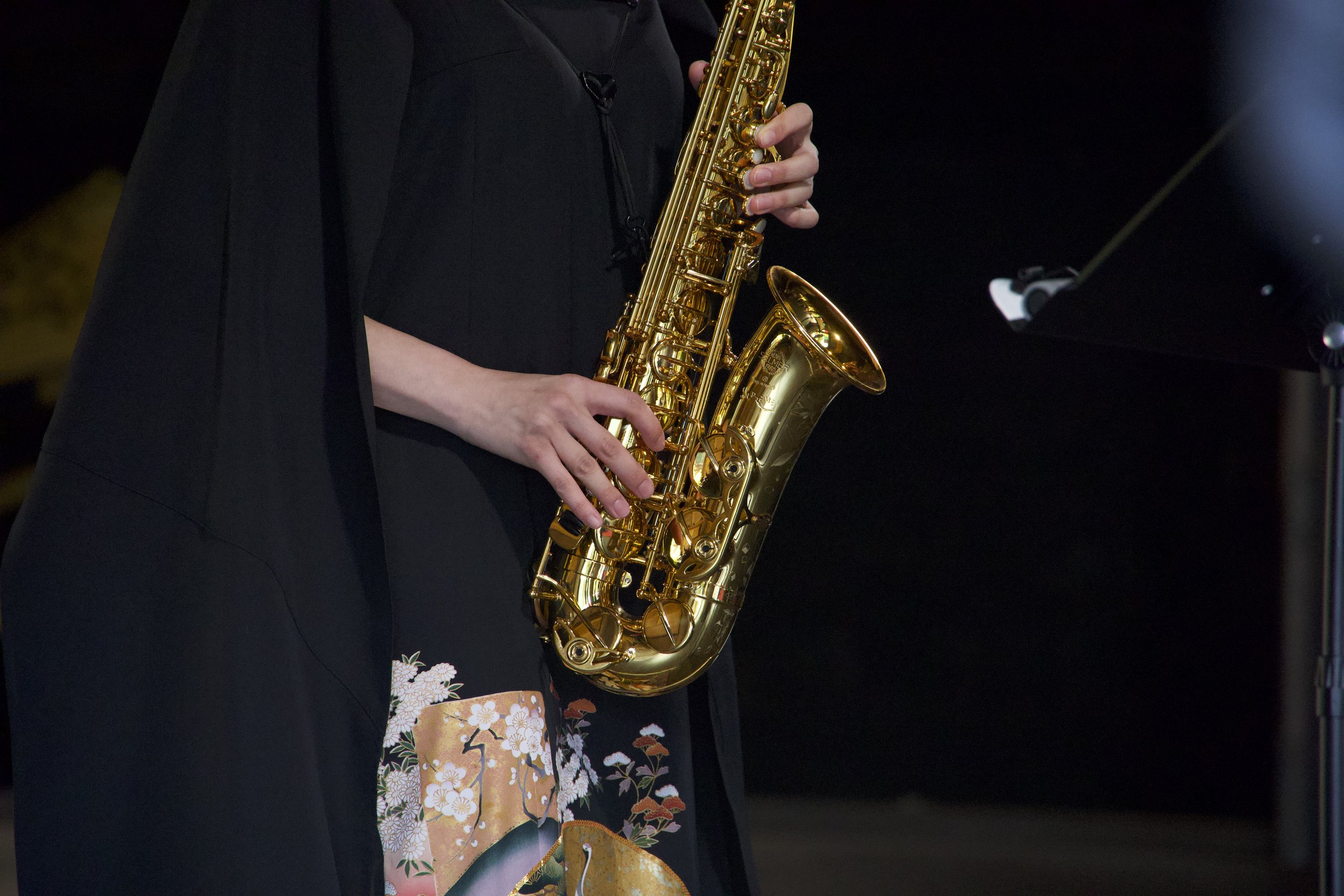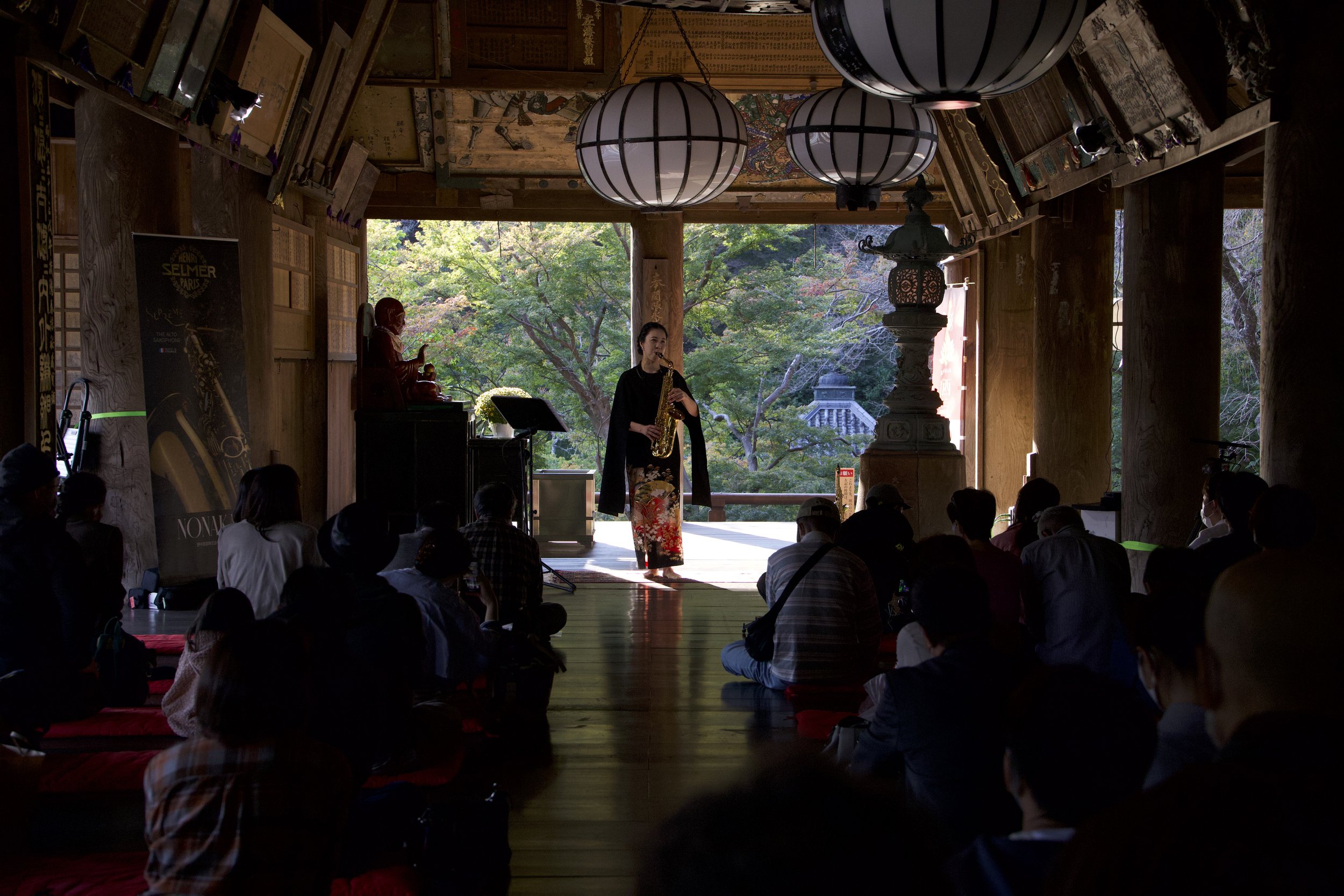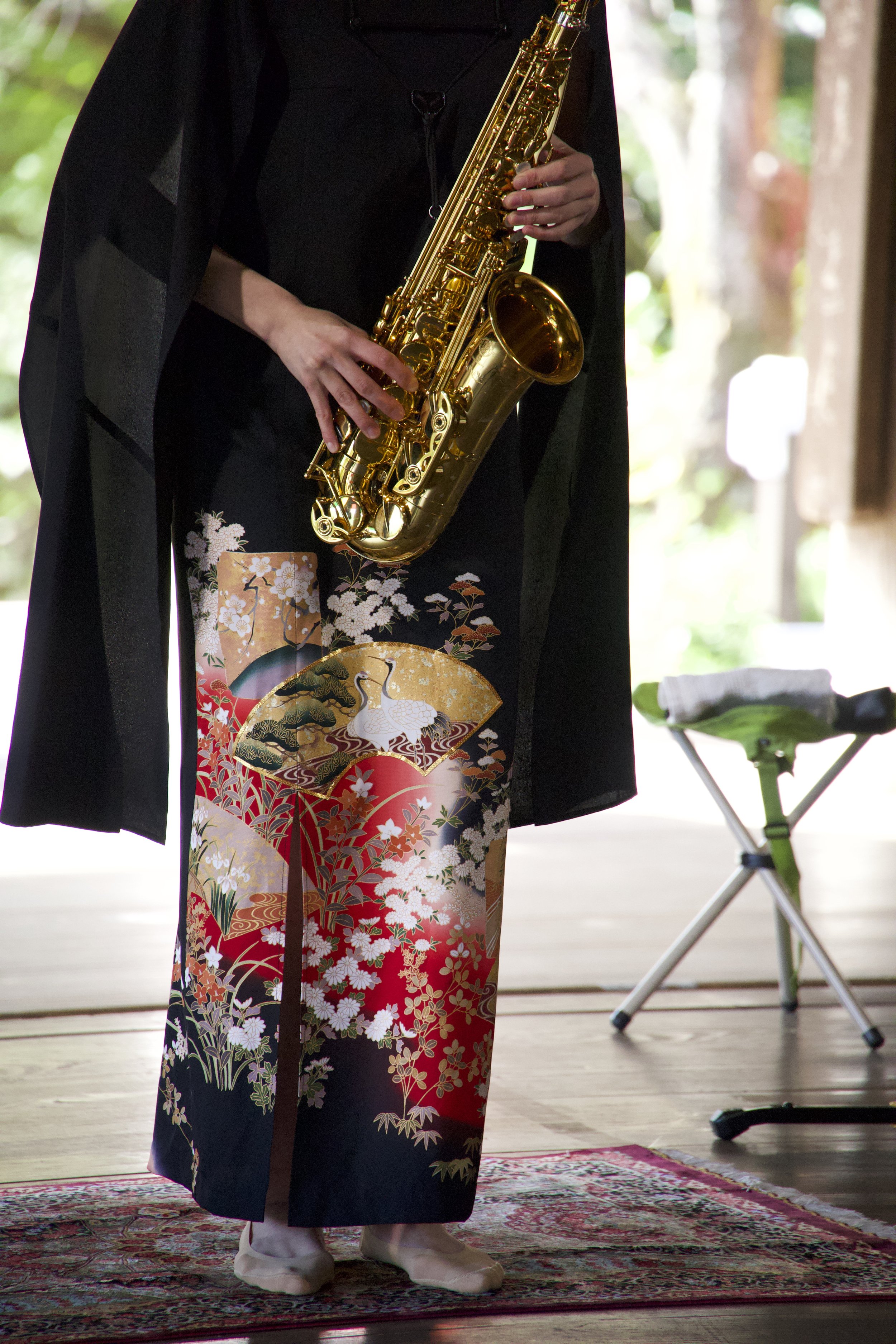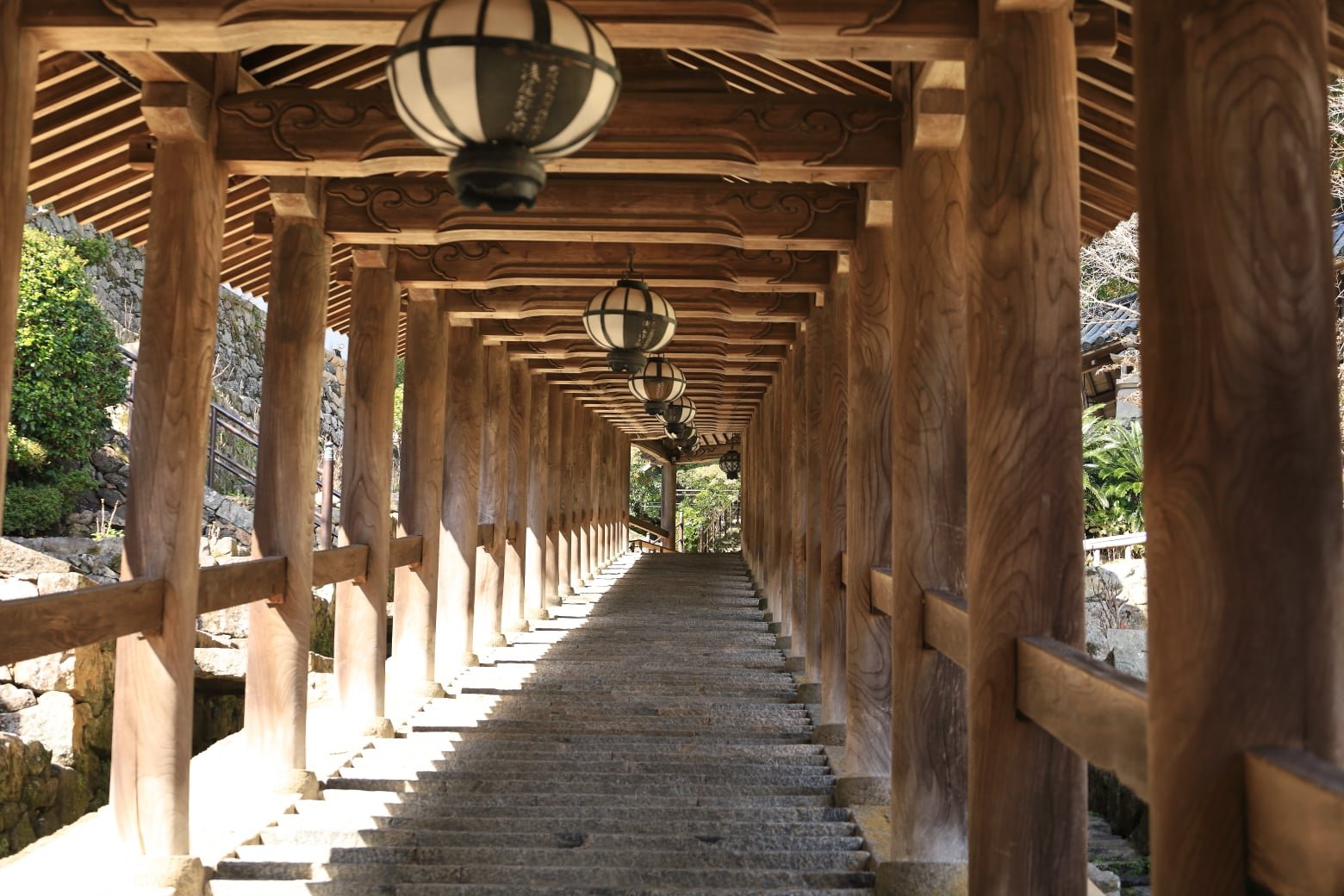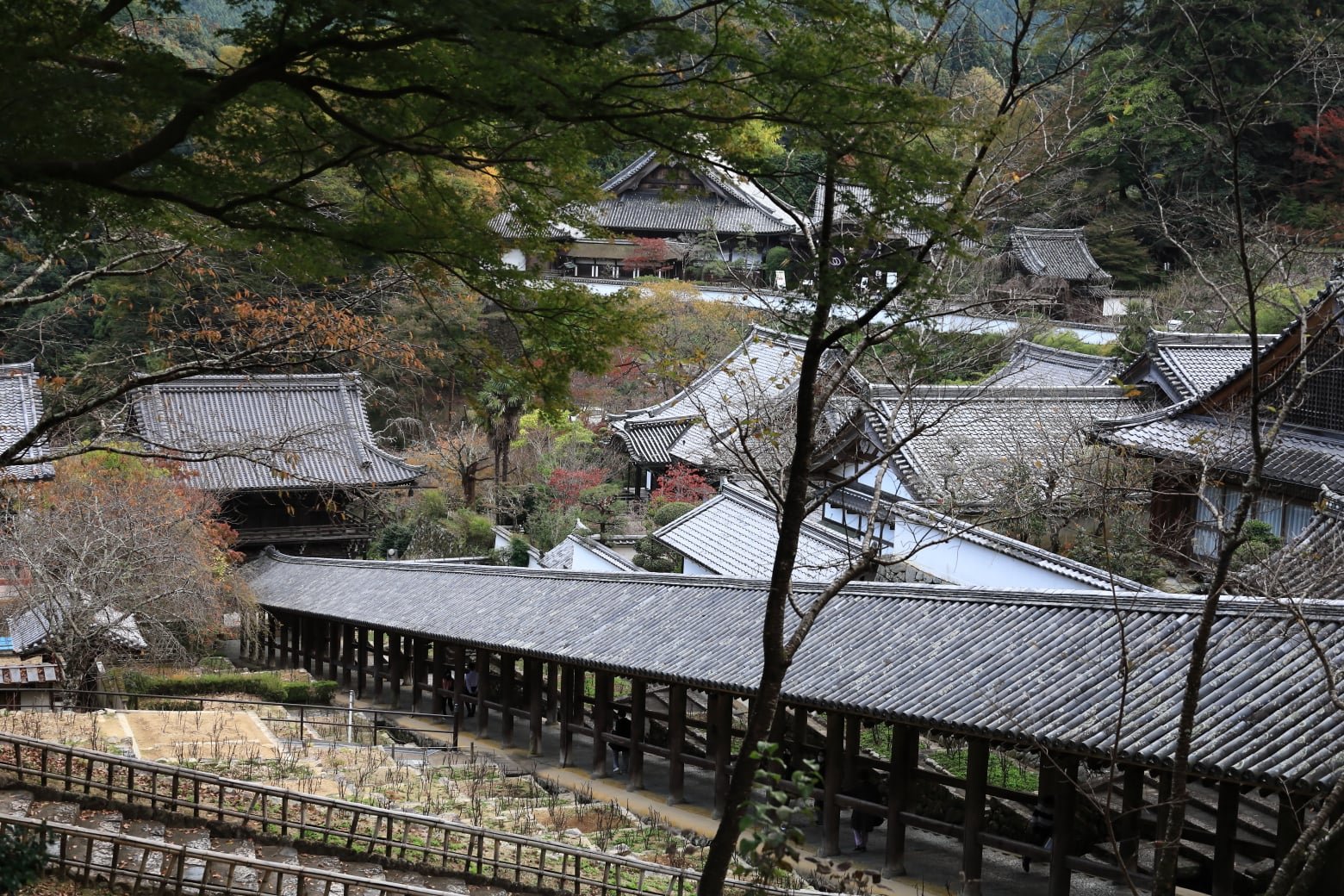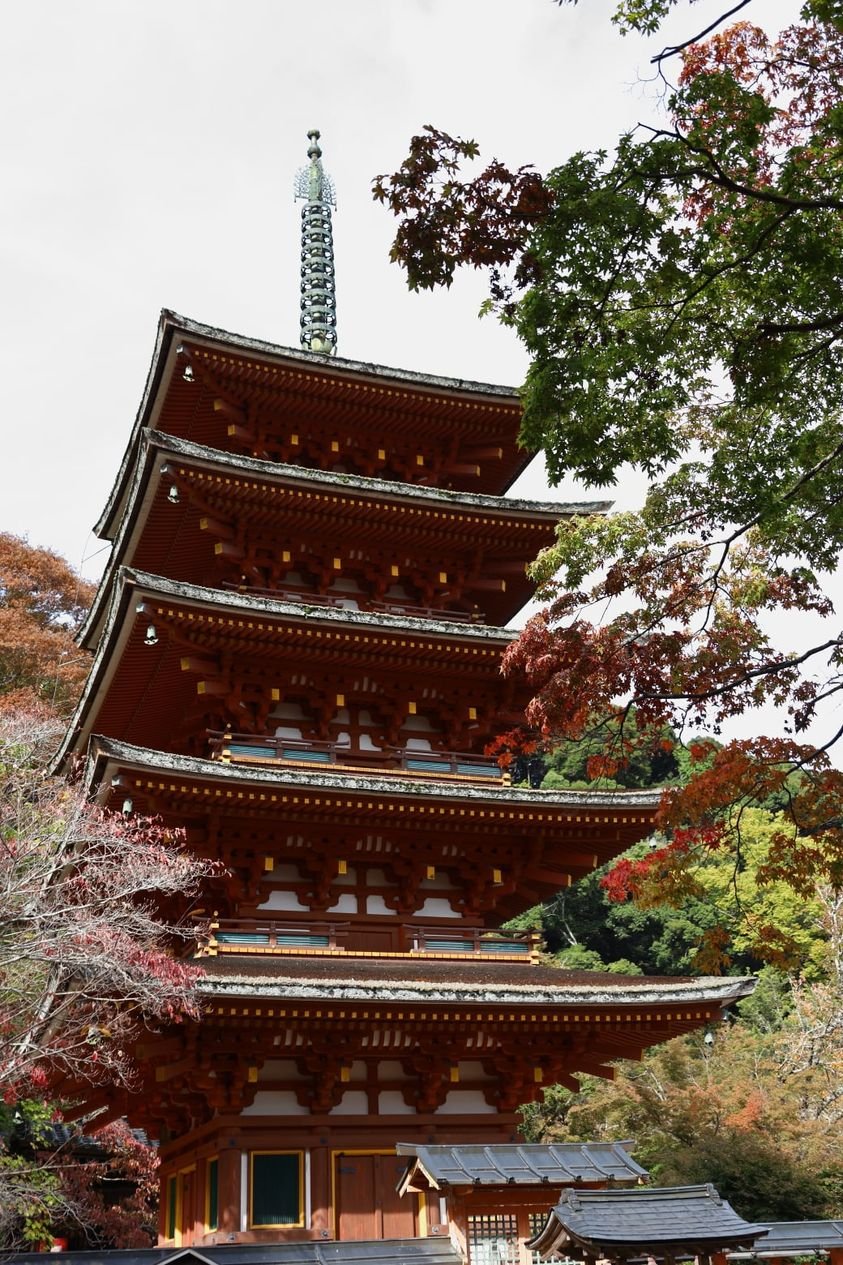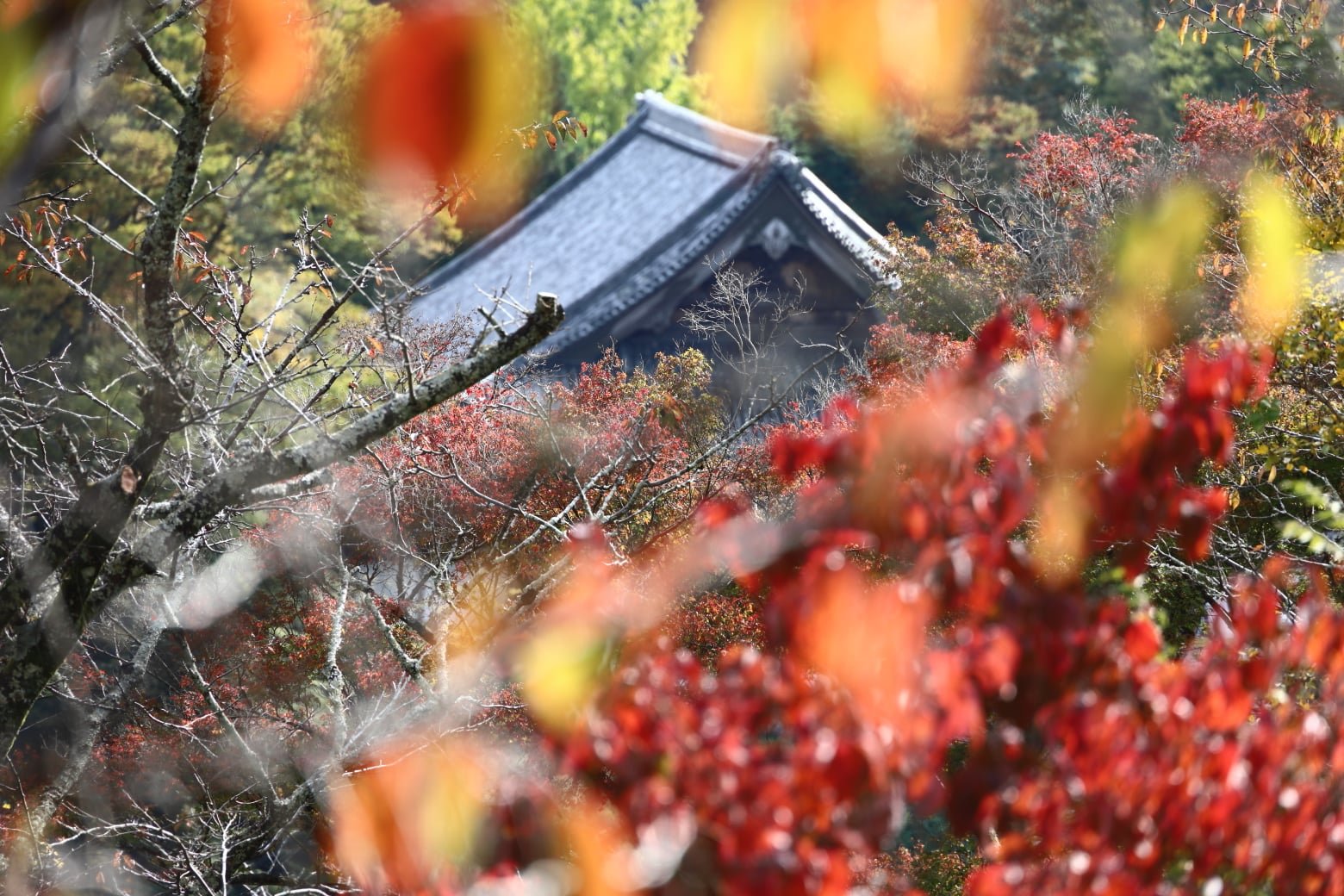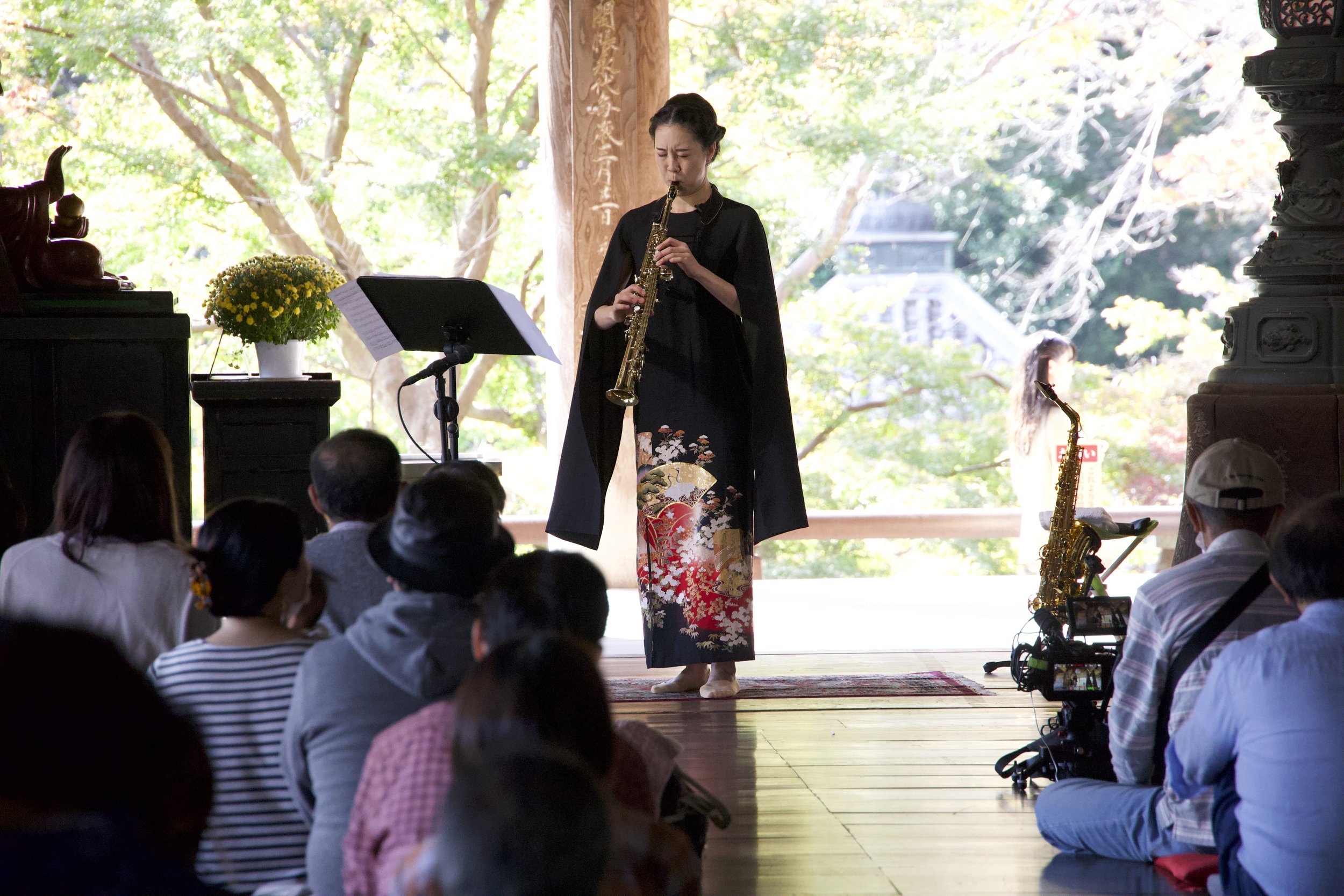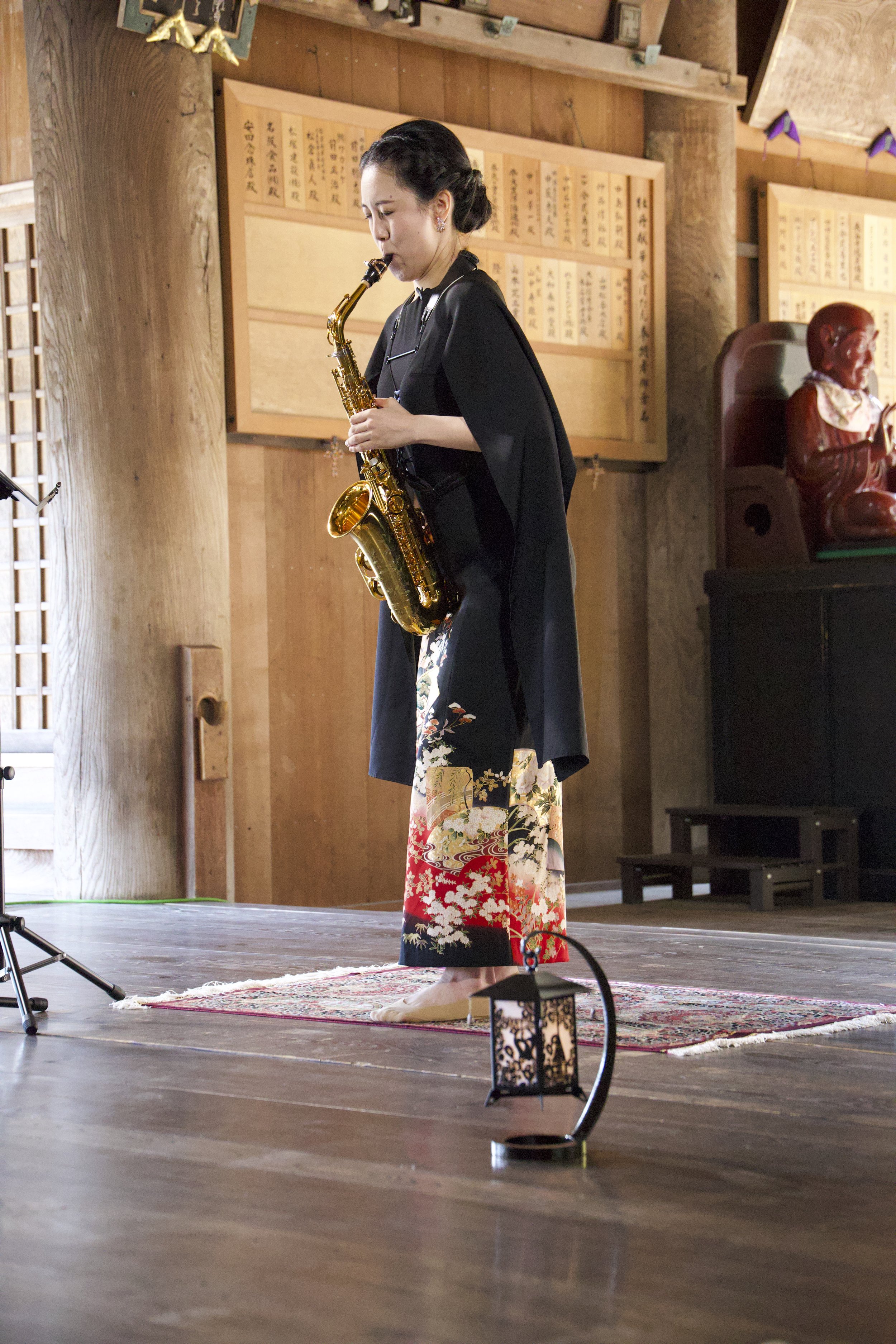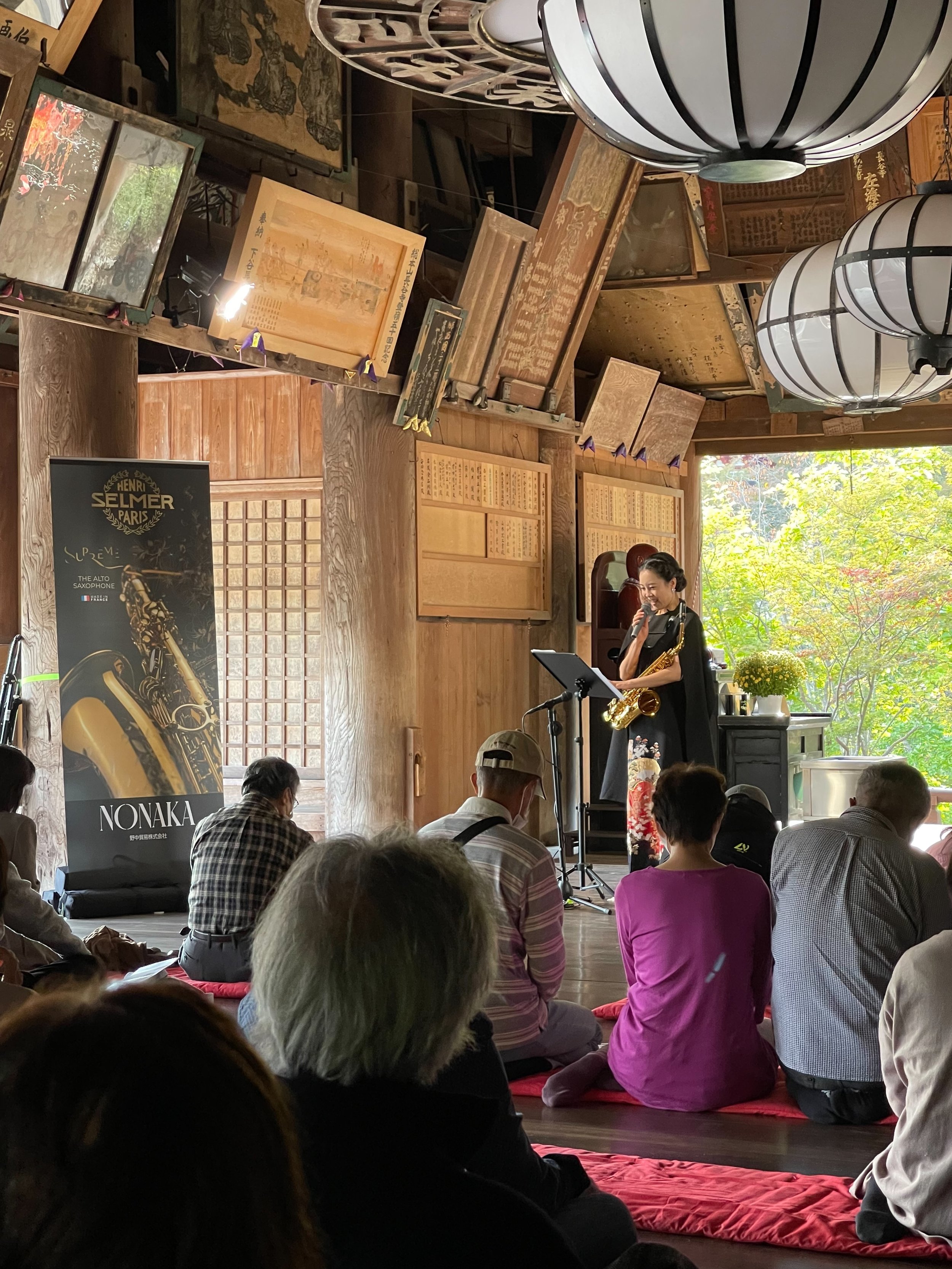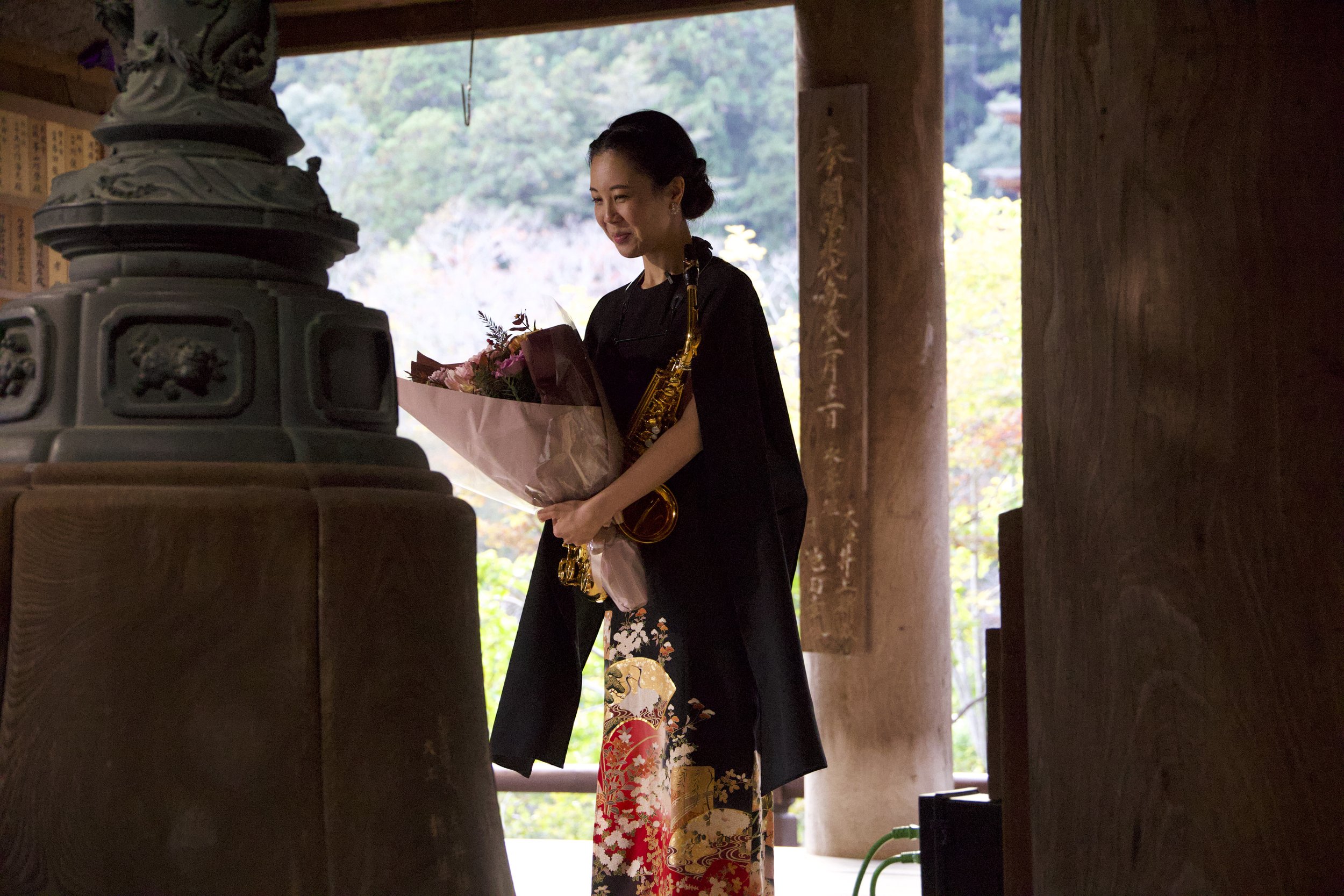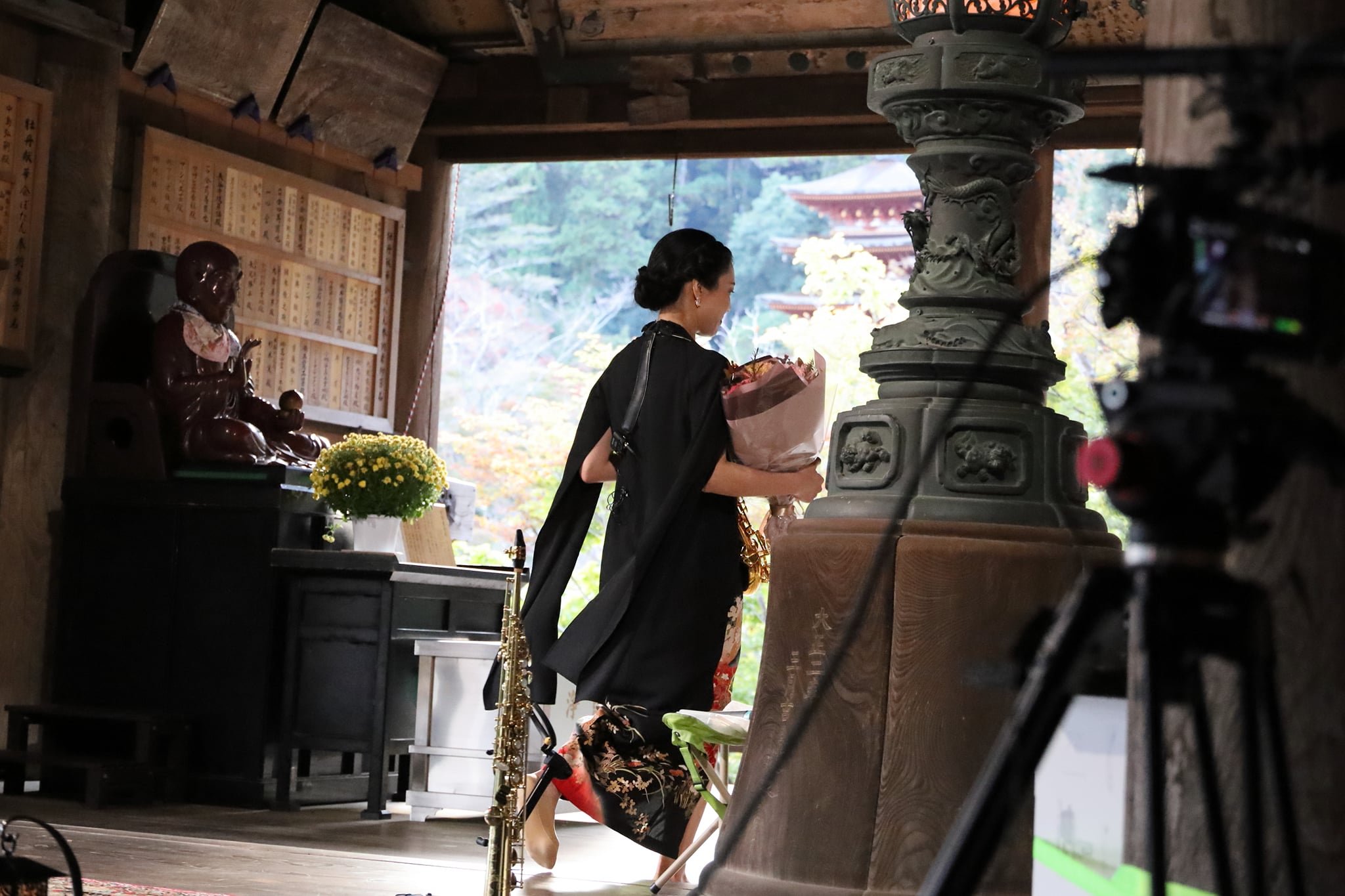Hase-dera Concert
On Monday afternoon, November 1st I had the great privilege to perform a classical saxophone concert at Hase-dera in Nara, Japan. Nara was the first permanent capital of Japan, and Japanese Buddhism had its earliest beginnings there. Hase-dera was founded in 686 AD, and is the main temple of the Buzan sect of Shingon Buddhism. The Hondō, meaning “Main Hall,” is a National Treasure of Japan, designated by the Japanese government as the most precious of Japan's Tangible Cultural Properties.
Hase-dera is a spectacular venue built onto the side of a mountain. Visitors enter the property by ascending a 200 meters long staircase made up of 399 small stone steps. The performance took place inside of the Hondō, where the 9.3 meters tall Statue of the Eleven Faced Kannon (Goddess of Mercy) resides. It was a gorgeous, sunny autumn day with a nice breeze blowing in, not hot or cold. The stage was set up flawlessly, and I could not have asked for anything more perfect.
I was unaccompanied, meaning that I performed solo for the audience for the entire concert. Typically, I partner up with a pianist, guitarist, or other musicians on stage. It was an endurance test playing sax for over an hour unaccompanied, as there is no room for error or rest breaks.
From where I was standing facing the audience, there were rows of bright red Zabuton, floor cushions laid out for people to comfortably sit on. The deep browns of the wooden floor paired so well with the strong red colors. On my left, was the eleven-faced Kannon, carved from a local camphor tree, watching over me with a peaceful expression. I cannot include those images because photography of the statue are not allowed. On my right was the expansive balcony that overlooked soaring mountain ranges. Behind me were trees and the fine light peering through the leaves. For a Monday afternoon, I had a wonderful turnout to capacity of over fifty people. The Hondō can fit up to one hundred people, but due to COVID-19 social distancing measures halved the available capacity.
Henri Selmer Paris Saxophones that were used at the concert: (left) Series III Soprano Saxophone, (right) Supreme 92DL Alto Saxophone
The pieces I played were a mix of some classical pieces, Japanese and American folk tunes, and compositions written for the saxophone. Below is the repertoire:
Joseph Brackett (1797-1882) - Simple Gifts (Shaker Song) (1848)
Marin Marais (1656-1728)Les folies d’Espagne (1701)
Ryo Noda (b. 1948) - Kocho no mai (2016)
Kenji Miyazawa (1896-1933) - Hoshimeguri no Uta(1918) (4’)
Robert Schumann (1810-1856) - Kinderszenen "Traumerai" F-Dur Op.15-7 (1838)
C.P.E. Bach - Sonata in A minor for Solo Flute, Wq.132, H 562 (1747)
I . Poco adagio
II. Allegro
III. Allegro
Adrienne Albert (b.1941) - Tango Sozinho (2021) Asia/Japan Premier
Teiichi Okano (1878-1941) - Momiji (1911) • Oboro Zukiyo (1914) • Furusato (1914)
Encore: Edward Elgar (1857-1934) - Salut d'amour,Op.12 (1888)
It is extremely rare for an outsider to hold a music concert in Hase-dera, and the first time in its almost 1,400 year history that a saxophone was played inside of the Hondō. In June 2020, I had the opportunity to shoot a short piece at the balcony area (06:49-08:11). The kind and generous staff members of Hase-dera's Office of Academic Affairs lent their full support to ensuring that this would be a successful event.
(from left to right) Mikiko Yamaguchi, Chika, Monk Takiguchi-san, Masayo Yamamoto
None of this would have been possible without the generous support of my sponsors. Yamamoto Masayo of Mahoroba Art Lab organized a monthlong classical music concert series at various Nara temples entitled Prayer for May’yo, Volume 2. PDF flyer in Japanese language HERE.
Nonaka Boeki is the distributor of Henri Selmer Paris within Japan. Nonaka sponsored the event by lending me their newly released Henri Selmer Paris Alto Saxophone Supreme model. I had the opportunity to briefly test the instrument several months ago and thought it was a great horn. But after practicing on it for two weeks, and then performing with it in front of a live audience gave me an entirely different perspective.
My pianist, Mikiko Yamaguchi, hears me playing my Henri Selmer Paris Series III Alto horn all the time. As I played a piece on the Supreme, her eyes opened widely and she exclaimed, “Wow! That horn makes you sound like you practiced a lot!” Mikiko raved how free and smooth it sounded. It is always nice to have someone who I trust give me their sincere feedback.
KIEN (季縁) is a Kyoto luxury fashion brand that upcycles Kimono fabrics into gorgeous silk gowns. You can read more about my visit to KIEN’s Kyoto showroom HERE. For the concert, KIEN lent me a stunning black silk Kimono dress with red and gold highlights with Japanese design motifs such as a crane and fan.
Niche, a Kyoto media production company, organized a three person film crew filming the concert with five cameras.
I would like to thank everyone involved, including Hase-dera, Mahoroba Art Lab, sponsors, and my loving family & friends, for all of their support! Thank you to all audience members who made the long journey to Hase-dera to attend! I cannot wait to share with the world the concert videos!
